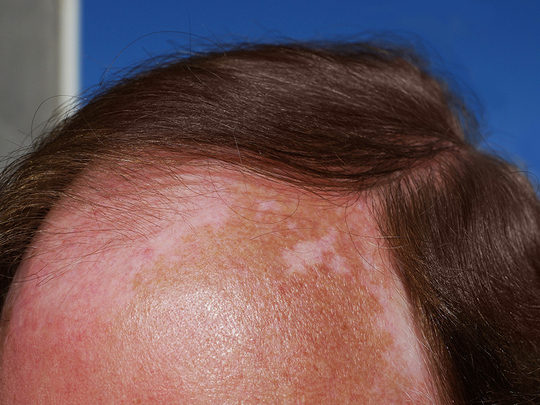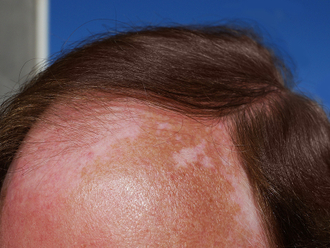
Samuel Kumar, a resident, asks: “I have been suffering from white patches scattered on my face. I think this is because of the constant exposure to sunlight. But, I am not sure about this. I have visited some skin specialists, and they prescribed some creams, but it didn't work. Doctor, please help me... it is spreading.”
Dr Mathew Thomas, Specialist Dermatologist at Aster Medical Centre in Sharjah, answers: It’s not clear in the question that whether the patches are really white or are they just hypo-pigmented (reduced skin colour).
The differential diagnosis can change accordingly. Even though you have mentioned the skin lesion on your face is white, I presume that they are hypopigmented patches, as it is very common in this part of the world. It may result from a primary skin disorder, or it may be part of a systemic disease with other clinical features. Early definitive diagnosis is the key for the subsequent effective treatment.
Hypopigmented patches on skin are broadly classified into four groups: skin lesions without any surface changes, skin lesions with additional surface changes, skin lesions associated with malignancies and lesions associated with other organ involvement. But since your symptoms are not elaborated in the question, it is difficult to classify in this perspective.
The four common skin disorders that can present with hypopigmented patches on face are: Tinea versicolor, post inflammatory hypopigmentation, Pityriasis Alba and early Vitiligo.
Please understand that all of these four conditions are very benign and are mostly confined to skin only. A simple skin test can confirm the diagnosis of Tinea Versicolor (also known in South India as Chunangu, Thembal or Porikanni), which is a common fungal infection on the skin. This condition is curable if appropriate treatment is taken.
Post inflammatory hypopigmentation is the physical, chemical and ionizing radiation (including sunlight allergy) injuries to the skin and may result in hypopigmentation upon healing. Such injuries are revealed on detailed history taking. These patches take a long time to clear off. Further, sun allergy can be prevented by using appropriate topical sunscreen. A weak topical steroid cream can also be tried under the supervision of a dermatologist.
Pityriasis Alba usually presents as ill defined hypopigmented lesions also with a scaly surface. It is most often seen in children and is often precipitated by sun exposure. It is not itchy and is considered to be a form of mild inflammatory Dermatosis and can be associated with eczema. Pityriasis Alba may be conspicuous in heavily pigmented skin. In lighter skins, it may become conspicuous after sun tanning. It’s is considered a skin disorder of late summer. It is very rarely seen in adults too. However, it resolves spontaneously and may not require treatment. Treatment may include a simple emollient cream. Topical hydrocortisone preparations may be helpful if mild inflammation is present.
Vitiligo presents clinically as an asymptomatic area of total pigment loss. It may start as a hypopigmented patch and then become white. The presence of white hairs over the lesion is a useful feature supporting the diagnosis. The disease may be rapidly progressive and occur on exposed sites e.g. face and hands often cause significant distress to the patient. Treatment is usually tailor made for individual patient. If the condition is severe, an experienced dermatologist will be able to help you. I wish you good health and a speedy recovery.
Disclaimer: This blog is a conversation and is not an alternative for treatment. The recommendations and suggestions offered by our panel of doctors are their own and Gulf News will not take any responsibility for the advice they provide.








